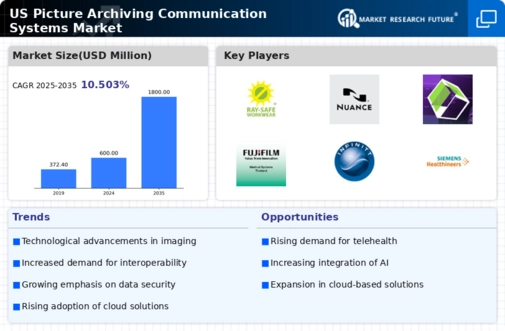The US Picture Archiving Communication Systems (PACS) Market exhibits a dynamic competitive landscape characterized by technological advancements and a surge in demand for efficient medical imaging solutions. As healthcare institutions strive to enhance their operational efficiency and improve patient care quality, the need for sophisticated PACS technologies has intensified. Companies engaged in this sector leverage innovations in artificial intelligence, cloud computing, and data analytics to offer robust solutions that address the complexities of medical imaging.
The competitive landscape is further influenced by factors such as regulatory requirements, the increasing emphasis on interoperability, and the rising prevalence of chronic diseases necessitating advanced imaging techniques. This scenario prompts firms to adopt strategic initiatives, including partnerships and collaborations, to enhance their market positioning and respond to the evolving healthcare needs in the US.
RAYSAFE has carved a significant niche in the US Picture Archiving Communication Systems Market by focusing on developing advanced imaging solutions that prioritize patient safety and diagnostic accuracy. The company is recognized for its innovative approach to radiation protection and diagnostic imaging, promoting a culture of safety in healthcare settings. RAYSAFE's strength lies in its ability to integrate cutting-edge technology with practical solutions that streamline workflow and enhance diagnostic efficacy.
The company’s market presence is bolstered by its commitment to research and development, fostering the creation of tailored products that address specific challenges faced by healthcare providers in the realm of imaging and communication systems.
Konica Minolta Healthcare has established itself as a formidable player in the US Picture Archiving Communication Systems Market, known for its comprehensive portfolio of medical imaging solutions. The company offers a range of products and services, including diagnostic imaging systems and healthcare IT solutions that enhance the management of medical images. Konica Minolta Healthcare's strengths reside in its focus on innovation and customer-centric solutions, ensuring they meet the diverse needs of healthcare providers. The company also pursues strategic mergers and acquisitions to expand its capabilities and market reach, reflecting its commitment to consolidating its presence in the competitive landscape.
Through these initiatives, Konica Minolta Healthcare enhances its operational efficiencies and provides continued support to healthcare organizations aiming to drive better patient outcomes through effective imaging solutions in the US.


















Leave a Comment